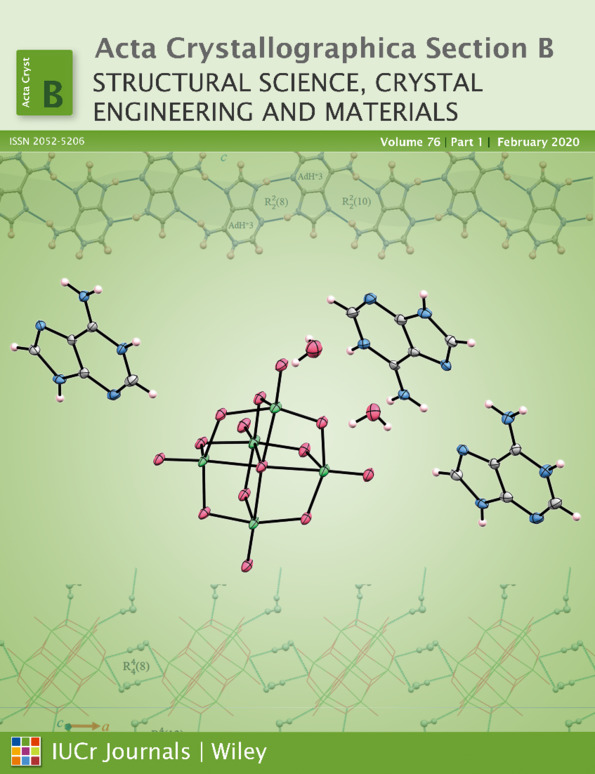Compositely modulated structures of phosphor materials SrxLi2+xAl2–xO4:Eu2+
Abstract
Composite crystals SrxLi2+xAl2−xO4:Eu2+ were synthesized and their structures were determined using single-crystal X-ray diffraction. The commensurate structure with a modulation wavevector q = 5c*/6 was analyzed in a conventional manner in 3D space, while a structure model in (3+1)-dimensional superspace was used for the other two crystals with modulation wavevectors slightly differing from 5c*/6. The superstructure of the commensurate phase was described using the space group P4/n and a common superspace group I4/m(00γ)00 was used for the (3+1)D structures of all three crystals. The whole structure of each crystal consists of two substructures. Basis vectors a and b are common, but c is different for the two substructures. The first substructure is a host framework constructed by (Li/Al)O4 tetrahedra sharing edges. A linear connection of cavities is seen to be channel-like, in which Sr ions locate as guest cations forming the second substructure. The crystal of q = 5c*/6 contains five Sr ions per six cavities in a channel. Sr ions are distributed at seven sites, some of which are partially occupied. Statistical disorder of local structure models for the location of Sr ions in the channel was assumed to explain the results. Such a partially disordered character was also seen in the incommensurate phases and properly embodied by a (3+1)D model containing an atomic domain of the Sr ion with occupational modulation. Plots of the occupation factor, interatomic distances and the bond valence sum at each metal site as functions of t (= x4 − q·r) are roughly identical in the three crystals, which are considered as members of the same series of composite crystals.




